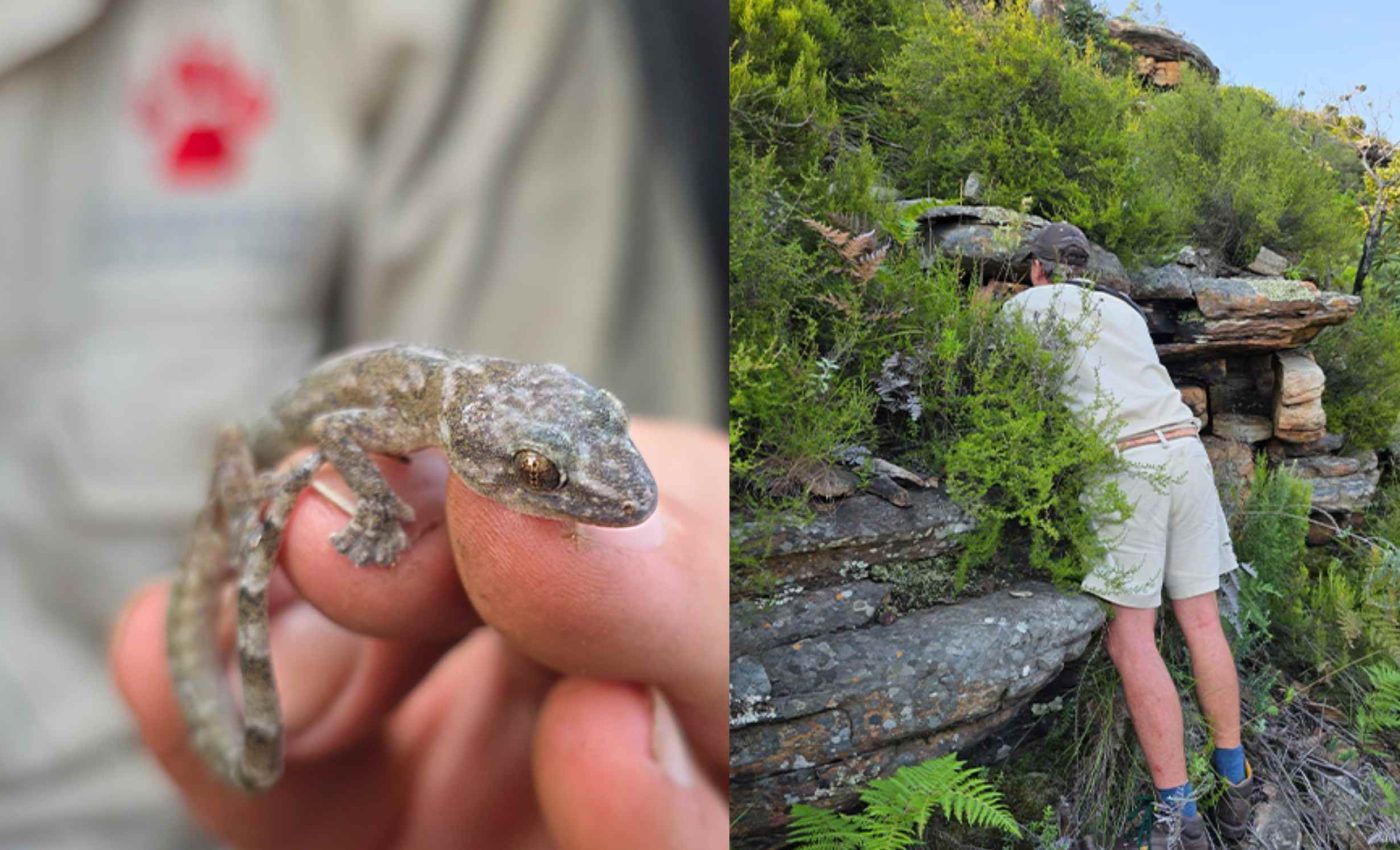
Reptile thought to be extinct for 34 years is rediscovered
A small gecko from South Africa went missing from science for more than three decades. It has been found again on the same mountain where it first turned up in 1991. The animal is the Blyde Rondavel flat gecko (Afroedura rondavelica), a member of a rock loving group that hugs cliffs with adhesive toe pads.
It was last recorded in Dec. 1991, then nothing, which made some experts question whether it was a unique species at all.
Finding Afroedura rondavelica
Lead researcher Darren Pietersen of the Endangered Wildlife Trust (EWT) led the new effort with colleague John Davies.
Getting to the mountaintop required permits, planning, and a helicopter drop, since the site is ringed by high cliffs.
The researchers climbed through dense shrubs and searched at night when the geckos emerge. They recorded what they saw and collected a small set of specimens and tissue samples.
Those samples help confirm identity and guide future conservation work.
The team observed roughly a few dozen individuals on the summit. They photographed several and noted key features used in identification.
The rediscovery of Afroedura rondavelica also addresses a long standing debate.
Some had argued the 1991 specimens were juveniles of a related species on a nearby peak, but new observations support the view that this is a distinct species.
Where Afroedura rondavelica lives
The site is an isolated peak in Blyde River Canyon Nature Reserve in South Africa’s Mpumalanga province. In geography, such a landform is called an inselberg, a solitary hill that rises steeply from the landscape.
An inselberg concentrates life into cracks, ledges, and narrow bands of vegetation. That patchwork layout makes it hard for people to reach and easy for small reptiles to hide.
Flat geckos are adapted to life on rock faces. Their toes carry rows of microscopic structures known as scansors, arrays of tiny hairs that create close contact with surfaces, a mechanism described in classic adhesion research.
This setup favors a flattened body, a low profile on the stone, and fine scale traction along vertical ridges. It allows steady movements along cliffs where predators and people have trouble following.
Why Afroedura rondavelica matters
The Blyde Rondavel flat gecko belongs to Afroedura, a southern African genus with many species restricted to small ranges. Species with narrow ranges can slip through the cracks of surveys and go unrecorded for years.
The gecko carried an IUCN Red List status of Data Deficient in South Africa’s national assessment because the species was known from a single site and very few records, a formal status that signals a need for more information.
Access is one reason. Sheer cliffs keep the mountaintop off limits to casual visits, and flights with scientific work on protected land require permission.
“Having a species that is data deficient annoys me,” said Pietersen, referring to the motivation for the expedition. Time and funding also matter for species that rarely make headlines.
What the name tells us
The gecko’s scientific name is Afroedura rondavelica. Rondavelica refers to the Three Rondavels, a set of rounded peaks in the canyon whose shape resembles a traditional round hut with a thatched roof.
The species was formally described in 2014 in a taxonomic paper that clarified how it differs from close relatives in body scales, toe lamellae counts, and tail shape.
People in southern Africa often see house geckos on walls around lights at night. Flat geckos live on rocks, not inside homes, and hug surfaces more tightly along narrow cracks.
They also show more uniform small scales and rely on their specialized toe pads for grip on steep stone. That lifestyle keeps them out of sight unless you look in the right place at the right time.
Blyde River Canyon as a refuge
The canyon holds a mix of cliffs, forest patches, and ledges that create safe pockets. Those pockets can support species with tiny ranges for long periods.
On an inselberg, even short distances take effort. Thick shrubs, loose stones, and hidden gaps can slow travel to a crawl across about 1,000 feet in half an hour.
Protecting Afroedura rondavelica
The new records provide location data, photographs, and genetic material for study. These data can inform a formal reassessment of conservation status of Afroedura rondavelica and help set priorities for fieldwork.
Future surveys in similar habitats around the canyon could reveal other small populations. Careful work will be needed to avoid trampling fragile microhabitats on narrow ridges.
Small reptiles do not always grab attention, but they fill key roles as insect predators and as prey for birds and snakes. Protecting them requires access, local support, and patience.
The rediscovery shows how much remains unknown in places that seem well mapped. It also shows how one focused trip can resolve a long standing question.
—–
Like what you read? Subscribe to our newsletter for engaging articles, exclusive content, and the latest updates.
Check us out on EarthSnap, a free app brought to you by Eric Ralls and Earth.com.
—–













